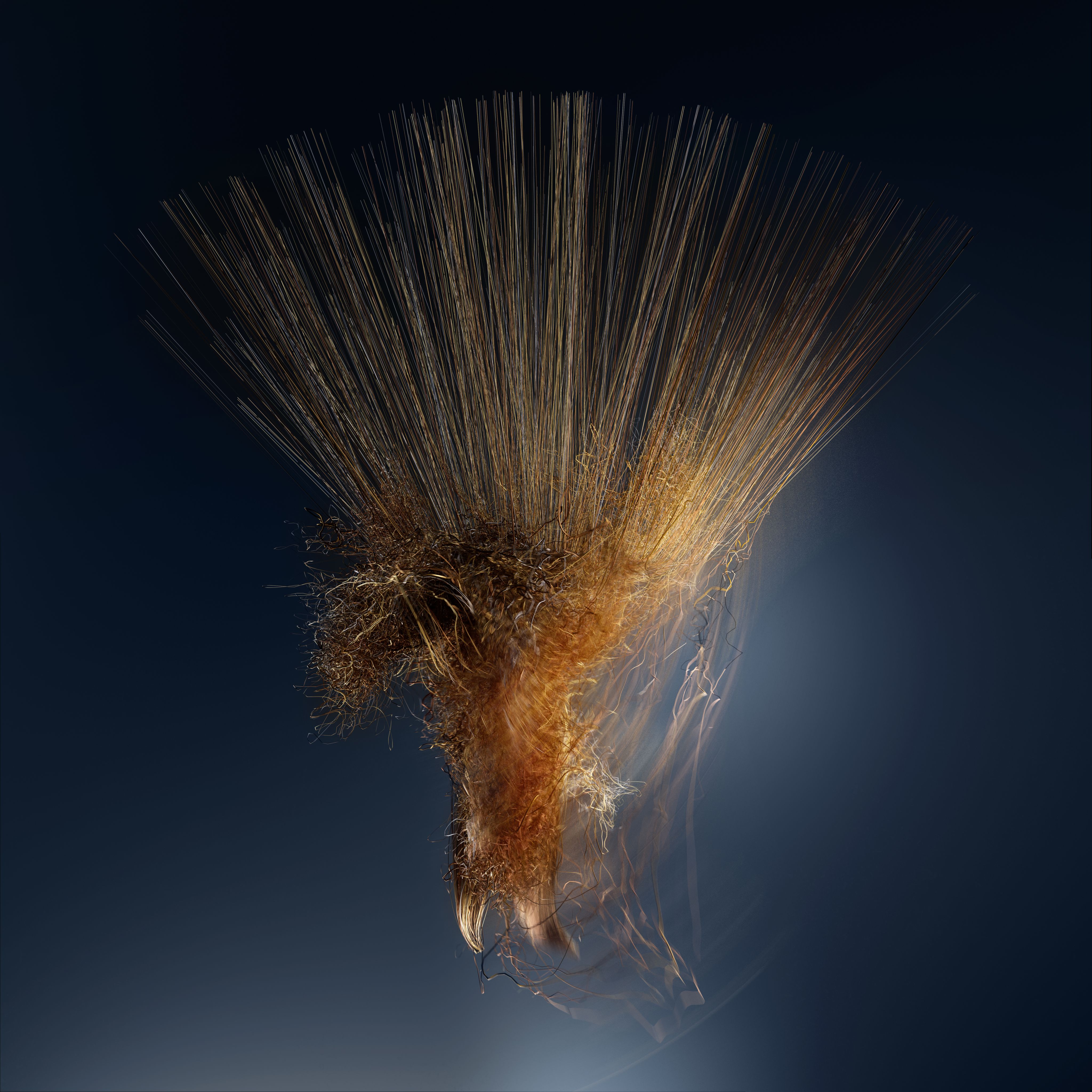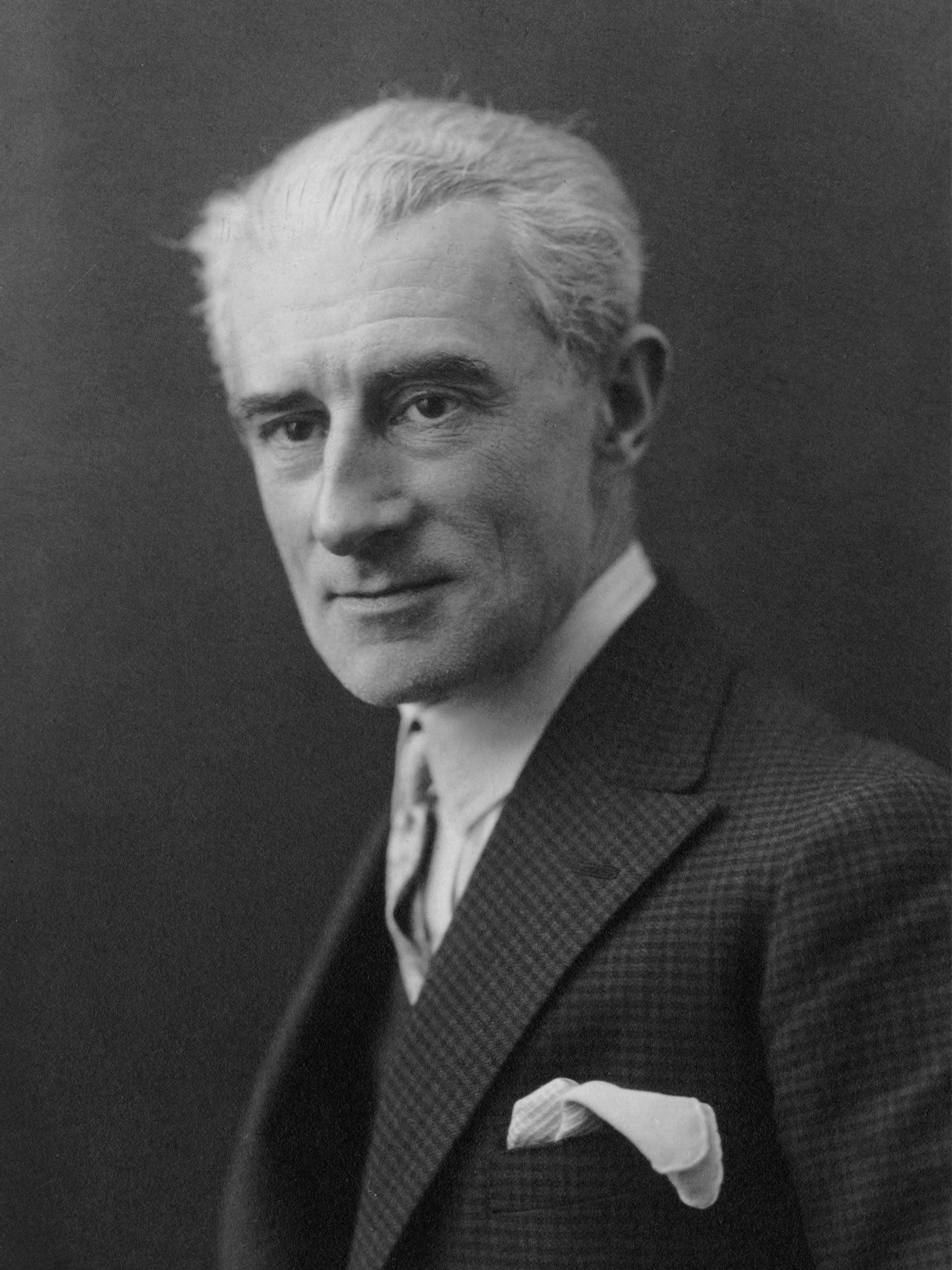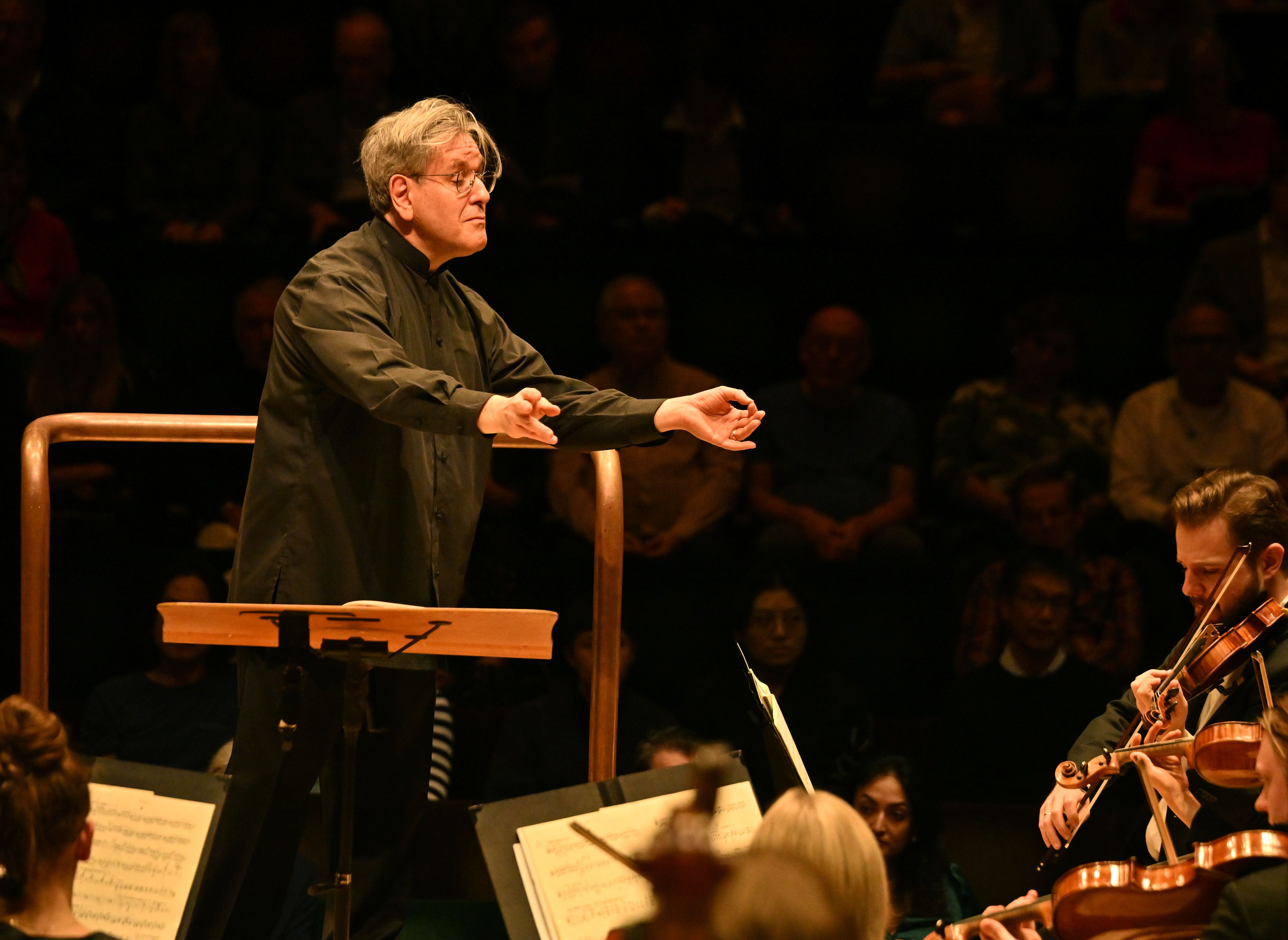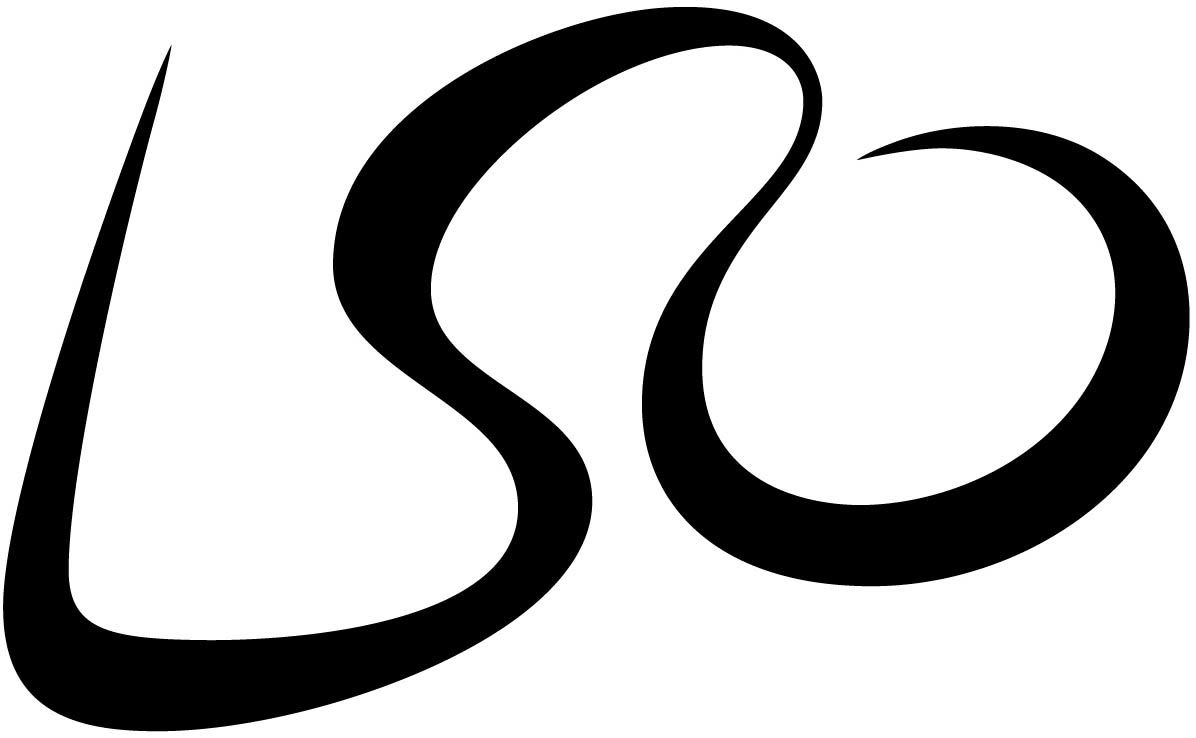Daphnis and Chloé
Maurice Ravel
✒️ 1909–1912 | ⏰ 70 minutes

What's the background?
Ravel was 34 when, in 1909, the impresario and founder of the Ballets Russes, Serge Diaghilev, commissioned him to write a ballet for his company’s 1910 Paris season. Ravel struggled with the work and missed his deadline. The gap was filled by Stravinsky’s The Firebird – and it’s amazing to think that this major Stravinsky work (which soon led to two more ballets for Diaghilev: Petrushka and The Rite of Spring) wouldn’t exist had it not been for Ravel dragging his heels.
Many complications hounded Daphnis and Chloé, not least the rehearsal process, hampered, as Ravel noted, by the fact that the Russian choreographer, Mikhail Fokine, didn’t know ‘a word of French, and I only know how to swear in Russian’. Fokine was more interested in the idea of the physicality of ancient pagan dance, while Ravel was concerned instead with ‘the Greece of my dreams, which is similar to that imagined and painted by French artists at the end of the 18th century’.
‘I felt that the music would be unusual, colourful and, most important … totally unlike any other ballet music.’
Why is this piece so iconic?
Fokine wanted Daphnis and Chloé to run continuously, instead of being structured in separate numbered movements. As a result, there’s a dramatic sweep across the entire work, arranged in three parts. At around 55 minutes, this is one of the longest ballets. Ravel scored the piece for a huge orchestra – one reason why Daphnis and Chloé is rarely mounted in its original ballet form. It’s expensive to put on, and the orchestra pits of many theatres aren’t big enough. To this already expansive scoring, Ravel audaciously extended the orchestra’s tonal palette by adding in an optional wordless chorus. This is often cut, even in concert performances, but tonight’s Half Six Fix offers a chance to hear how seamlessly Ravel integrated the chorus into the overall soundscape.
What is the music like?
The scenario, set on the Greek island of Lesbos, revolves around the romance of the goatherd Daphnis and the shepherdess Chloé, and was adapted by Fokine from a novel by the second-century Greek writer Longus. Ravel may have rejected Fokine’s request for physical, pagan music but there is no shortage of sensuality and even unbridled ecstasy. He created a keen impression of a pastoral idyll and a hint of the ancient world, even if filtered through a more modern, romanticising lens.
Ravel also excelled in set pieces, such as, in Part One, the ‘Grotesque Dance’ of the cowherd Dorcon (a rival for Chloé’s affections) followed by ‘Daphnis’ Light and Graceful Dance’, and Lyceion’s attempt to seduce Daphnis. Part Two features the violent ‘War Dance’ of the pirates, who abduct Chloé. Part Three opens with gently rippling flutes and clarinets, the sounds of nature awakening at daybreak and one of the most radiant, extended and scintillatingly orchestrated sunrises in music. There is a magical central Pantomime of thanksgiving enacted by Daphnis and Chloé before the god Pan, after they are reunited through his intervention. And the ballet ends with a dizzying, rhythmically propulsive and increasingly ecstatic ‘General Dance’.
Maurice Ravel
Born: Ciboure, France, 1875
Died: Paris, France, 1937
‘I still have so much music in my head, I’ve said nothing, I still have so much to say … ’
Igor Stravinsky referred to him as ‘the Swiss clockmaker’ for his craftsman-like attention to detail, and it’s no accident that Maurice Ravel had a fondness for mechanical toys and miniatures. His fascination with childhood innocence coloured a number of works, including the ballet Mother Goose and the opera L’enfant et les sortilèges (The Child and the Spells). He looked to the French 17th-century keyboardists in Le tombeau de Couperin, to the East in the song-cycle Shéhérazade and to American jazz in his Piano Concerto in G. The sounds of Spain suffuse his Rapsodie espagnole and Alborada del gracioso, not to mention his most popular piece, Boléro. This was his ‘one masterpiece’, he said, before adding: ‘Unfortunately, there’s no music in it’. He was famously self-deprecating too.
Ravel studied at the Paris Conservatoire, and controversially failed to win the prestigious Prix de Rome. Yet by the time of his ‘final failure’, in 1905, he had written key works such as the solo piano Jeux d’eau (1901) and the String Quartet (1902–03). He served as a driver in World War I, and returned just before the death of his mother, which broke down all close human contact for the reclusive composer. He wrote little after his two piano concertos (1929–31). He experienced neurological deterioration for the last decade of his life, which worsened after a car accident in 1932. He died in December 1937.

Keep Listening
Delve deeper into the music featured in our Half Six Fix series, and find related music recommendations, with our Half Six Fix playlist.

Sir Antonio Pappano
Chief Conductor Designate
After 22 years as Music Director of the Royal Opera, Covent Garden, Sir Antonio Pappano is LSO Chief Conductor Designate, becoming Chief Conductor this September. He was born just 20 miles away, in Epping, and moved to the US aged 13, but now lives in London. He has also held lead positions with the Théâtre de la Monnaie in Brussels (1992–2002) and the Orchestra dell’Accademia Nazionale di Santa Cecilia in Rome (2005–23). Opera is in his blood, and he brings this love of dramatic narrative and storytelling to his orchestral performances too. He directs his players with great immediacy: his conducting style is unfiltered, impassioned and straight from the heart. A natural communicator about music, too, he has presented programmes for BBC TV. This year he was appointed Commander of the Royal Victorian Order, having conducted at the Coronation of HRH King Charles III last year.

Tenebrae
Described as ‘phenomenal’ (The Times) and ‘devastatingly beautiful’ (Gramophone magazine), award-winning choir Tenebrae is one of the world’s leading vocal ensembles, renowned for its passion and precision.
On Stage
Sopranos
Jennifer Clark
Elizabeth Drury
Fiona Fraser
Isabella Gibber
Catriona Holsgrove
Marie Macklin
Laura Newey
Elisabeth Partridge
Áine Smith
Rosanna Wicks
Altos
Amy Blythe
Eleanor Minney
Sophie Overin
Lorna Price
Shivani Rattan
Anna Semple
Olivia Shotton
Joy Sutcliffe
Tenors
James Beddoe
Jeremy Budd
Jacob Ewens
Jack Granby
Jack Harberd
Sam Madden
Carlos Otero
Dominic Wallis
Ed Woodhouse
Basses
Gregory Bannan
Tom Butler
Joseph Edwards
Simon Grant
Thomas Lowen
James Mawson
Gavin Moralee
Binath Philomin
Jonathan Pratt
The London Symphony Orchestra
At the London Symphony Orchestra, we strive to inspire hearts and minds through world-leading music-making. We were established in 1904 as one of the first orchestras shaped by its musicians, and today we’re ranked among the world’s top orchestras. As Resident Orchestra at the Barbican since the Centre opened in 1982, we perform some 70 concerts here every year. We also perform over 50 concerts a year to audiences throughout the UK and worldwide, and deliver a far-reaching programme of recordings, live-streams and on-demand broadcasts.
Through our world-leading learning and community programme, LSO Discovery, we’re connecting people from all walks of life to the power of great music. Our musicians are at the heart of this unique programme. In 1999, we formed our own recording label, LSO Live, which has become one of the world’s most talked-about classical labels. As a leading orchestra for film, we’ve entertained millions with classic scores for Star Wars, Indiana Jones and many more.
On Stage
Leader
Roman Simovic
First Violins
Noé Inui
Ginette Decuyper
Maxine Kwok
Laura Dixon
William Melvin
Stefano Mengoli
Claire Parfitt
Elizabeth Pigram
Laurent Quénelle
Harriet Rayfield
Sylvain Vasseur
Richard Blayden
Dániel Mészöly
Shoshanah Sievers
Rhys Watkins
Second Violins
Julián Gil Rodríguez
Thomas Norris
Sarah Quinn
Miya Väisänen
David Ballesteros
Matthew Gardner
Naoko Keatley
Alix Lagasse
Belinda McFarlane
Iwona Muszynska
Csilla Pogány
Andrew Pollock
Paul Robson
Ricky Gore
Violas
Gillianne Haddow
Malcolm Johnston
Matan Gilitchensky
Steve Doman
Thomas Beer
Germán Clavijo
Julia O’Riordan
Robert Turner
Mizuho Ueyama
May Dolan
Vanessa Hristova *
Shiry Rashkovsky
Martin Schaefer
Cellos
Rebecca Gilliver
Laure Le Dantec
Alastair Blayden
Ève-Marie Caravassilis
Daniel Gardner
Amanda Truelove
Judith Fleet
Ghislaine McMullin
Peteris Sokolovskis
Joanna Twaddle
Double Basses
Rodrigo Moro Martín
Patrick Laurence
Joe Melvin
Jani Pensola
Chaemun Im
Thomas Goodman
Ben Griffiths
Adam Wynter
Flutes
Gareth Davies
Imogen Royce
Piccolo
Sharon Williams
Alto Flute
Patricia Moynihan
Oboes
Olivier Stankiewicz
Rosie Jenkins
Cor Anglais
Augustin Gorisse
Clarinets
Sérgio Pires
James Gilbert
Bass Clarinet
Martino Moruzzi
E flat Clarinet
Chi-Yu Mo
Bassoons
Rachel Gough
Joost Bosdijk
Contra Bassoon
Martin Field
Horns
Timothy Jones
Diego Incertis Sánchez
Angela Barnes
James Pillai
Jonathan Maloney
Off stage Horn
Brendan Thomas
Trumpets
James Fountain
Imogen Whitehead
Adam Wright
Kaitlin Wild
Off stage Trumpet
Jon Holland
Trombones
Simon Johnson
Jonathan Hollick
Bass Trombone
Paul Milner
Tuba
Ben Thomson
Timpani
Nigel Thomas
Percussion
Neil Percy
David Jackson
Sam Walton
Tom Edwards
* Members of the LSO String Experience Scheme
Established in 1992, the Scheme enables young string players at the start of their professional careers to gain work experience by playing in rehearsals and concerts with the LSO. The musicians are treated as professional ‘extras’, and receive fees in line with LSO section players. Kindly supported by the Barbara Whatmore Charitable Trust, the Idlewild Trust and The Thriplow Charitable Trust.
Programme Notes Edward Bhesania. Edward Bhesania is a music journalist and editor who writes for The Stage, The Strad and the Guildhall School of Music & Drama.
LSO Visual Identity & Concept Design Bridge & Partners

